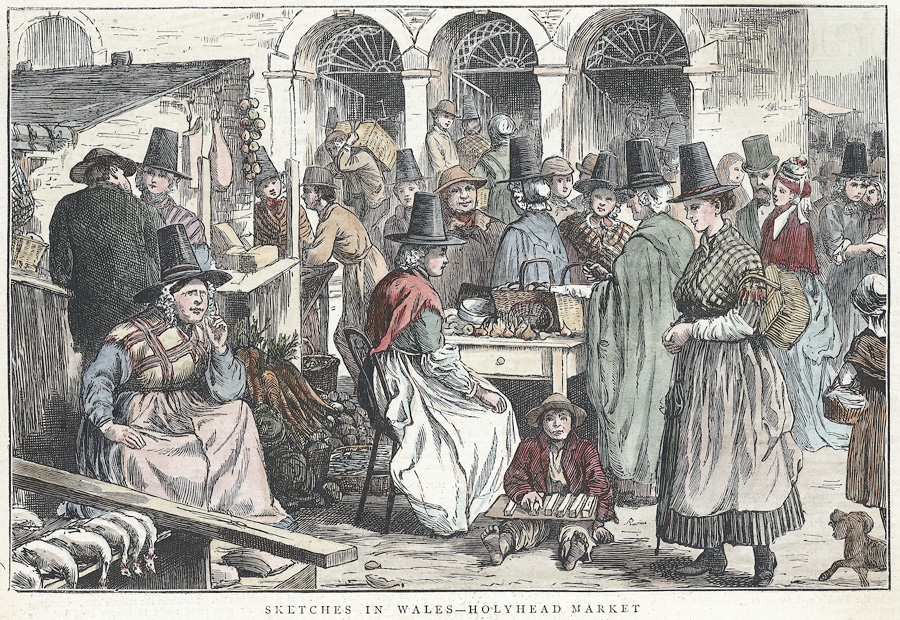Summary
While major construction work in and around the port of Holyhead brought steady employment, poverty was still rife and hunger soared among the poor of the town. A soup kitchen was opened in 1855 to offer some relief during the cold winter months.
This particle was first published in 2023 as part of the Ports, Past and Present project — but for some reason or other, I never shared it here. Until now that is as I am gearing up for cooking my annual batch of original Harbour Master Soup this weekend.
In the first half of the nineteenth century, Holyhead experienced considerable growth and improvements to the town infrastructure thanks to the growing importance of its port. The completion of Thomas Telford’s Holyhead to London postroad, the arrival of the railway and the improvements to the harbour by constructing Europe’s largest breakwater brought a constant stream of new workers and their families to the town. In February 1856, the Castle Hotel threw a lavish party to celebrate the installation of gas light in the streets! Holyhead, it seemed, was on the up.

Source: National Library of Wales, Public domain, via Wikimedia Commons
Despite these improvements to the town’s infrastructure and the rapid growth of the population, poverty was rife. The inveterate campaigner for local poor relief and Harbour Missionary, Thomas Jackson, therefore suggested in November 1855 that anyone who had a penny to spare in Holyhead should band together in the cold winter months:
As an humble individual, I would venture to suggest the formation of a PUBLIC SOUP KITCHEN, for the purpose of supplying the poor with cheap and nutritious soup during the inclement season, at one penny per quart.
His public request was answered over the following month. Together with Thomas Jackson, Mr and Mrs Hibbert of the Royal Hotel began distributing soup to forty people every week. By mid-December, several names attached to Holyhead harbour started an even larger initiative, among them Assistant Harbour Master John Roberts. Throughout December 1855, he recorded the establishment of the Holyhead Soup Kitchen for the poor in his personal diary.
Wed 12th […] met about establishing a soup kitchen for the benefit of the poor.
Mond 17 […] went round with Capt Tully for subscription towards the Soup Kitchen
Tuesd 18 […] this day Comdr Skinner supplied about 150 poor people with Soup for the first issue of Soup Kitchen
Frid 21st […] I stood Cook this day for the soup 220 persons were supplied
Thurs 27th […] I went to pay Bills on account of Soup Kitchen &c towards night it came on rain
It is not known whether the soup varied its ingredients every week, but it contained a combination of meat, seasonal vegetables and non-perishables, as is evidenced by a recipe that Roberts recorded in February 1856:
Soup materials Feby. 21st
40 lbs Beef
4 lb dripping
12 Onions
12 Leeks
20 Turnips
20 Flour
20 Oatmeal
40 Rice
4 Salt
½ Black pepper
188 ½ Total
Water 80 Gallons [added to ingredients]½ lb sugar [and]
Barley if substituted for rice
Even to the untrained eye, the ingredients are simple and intentionally cheap. The flour, oatmeal and rice mostly thicken the soup, rather than contribute to its taste. However, it speaks in favour of the organisers of the Holyhead Soup Kitchen that they chose the more expensive beef over pork. In combination with the vegetables, this soup was tasty and provided comfort during the cold season. At least once a week, the poor of Holyhead did not have to choose between heating or food, as the town’s Soup Kitchen provided both.

If you want to recreate this recipe at home, you will need half a pound of beef, 1 leek, 1 large onion, a small suede or turnip (all diced), half a cup of flour, oatmeal and rice/barley each, a pinch of salt and pepper. As a substitute for dripping, fry a few rashers of bacon or suet and add that to the chopped ingredients. Add 2 litres of water and simmer about 60 to 90 minutes until the ingredients have the desired tenderness. Stir regularly to prevent the thickening soup from burning. For a little extra flavour, add your favourite kitchen herbs or stock.
Sources
- ‘Public Soup Kitchen for Holyhead.’ The North Wales Chronicle. 17 Nov. 1855. p. 7. Welsh Newspapers Online.
- ‘Holyhead Soup Kitchen.’ The North Wales Chronicle. 1 Dec. 1855. p. 7. Welsh Newspapers Online.
- Diary kept by John Roberts, Assistant Harbour-Master, Holyhead […]. 1855-58. BMSS/25773. Bangor University Archives & Special Collections.

